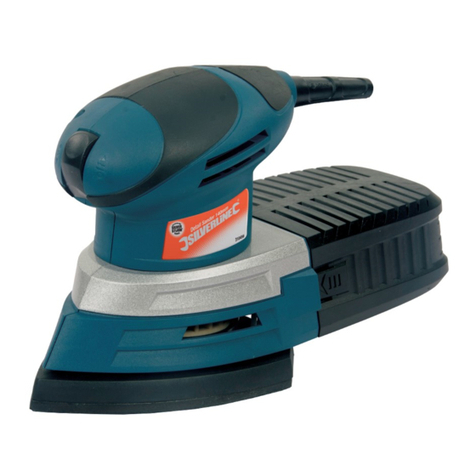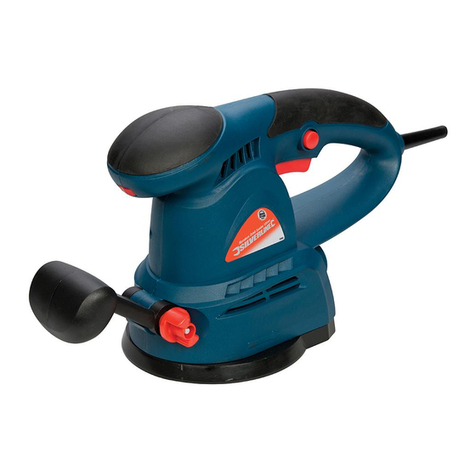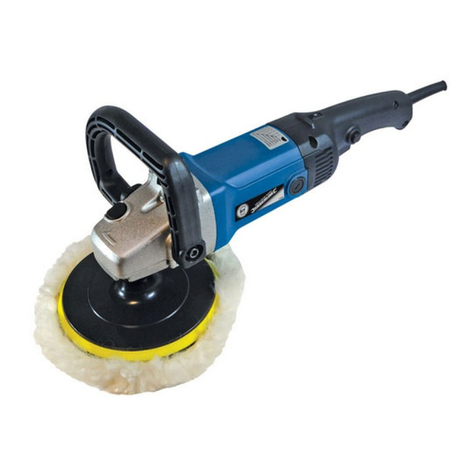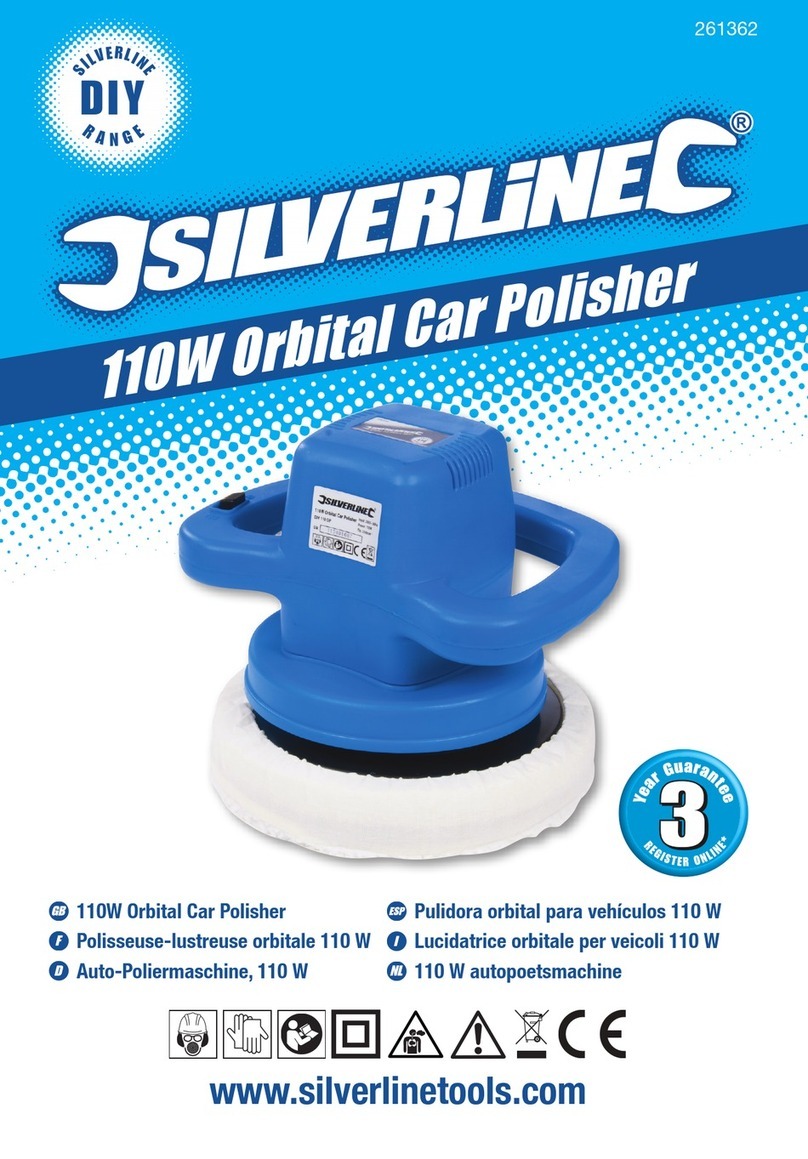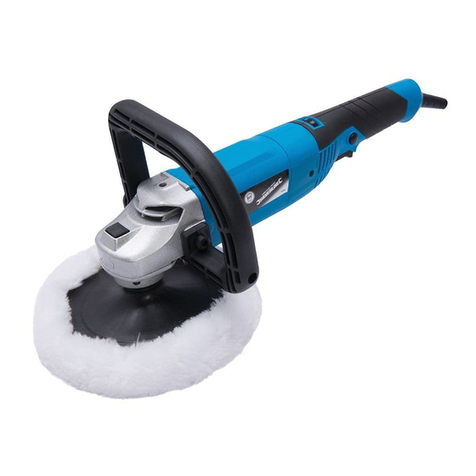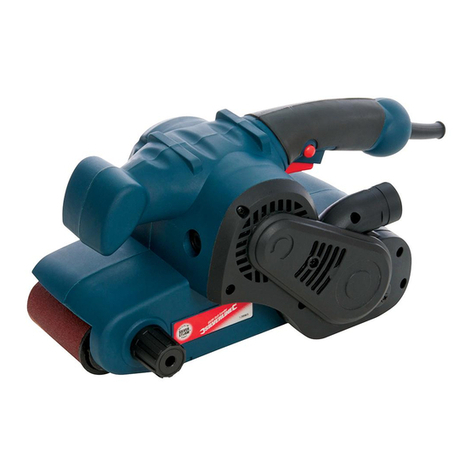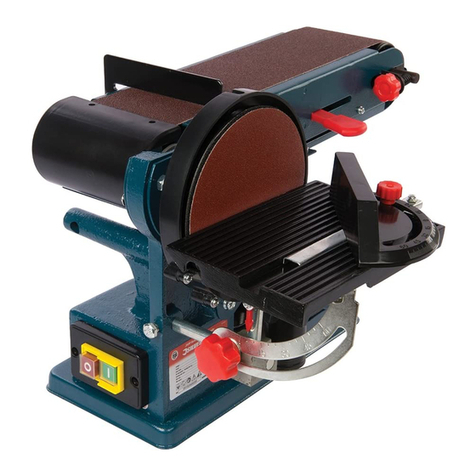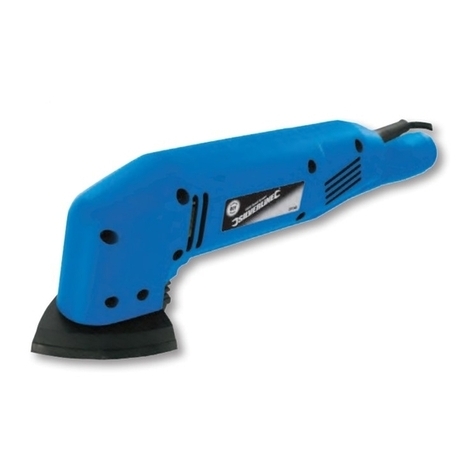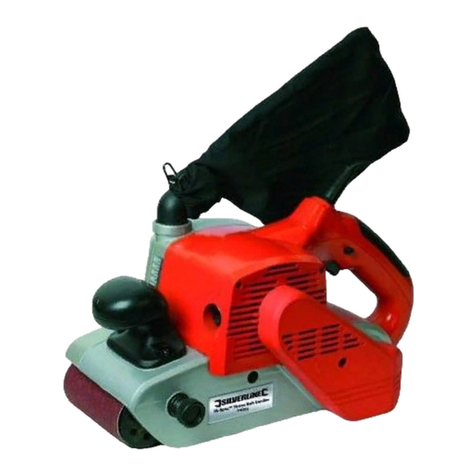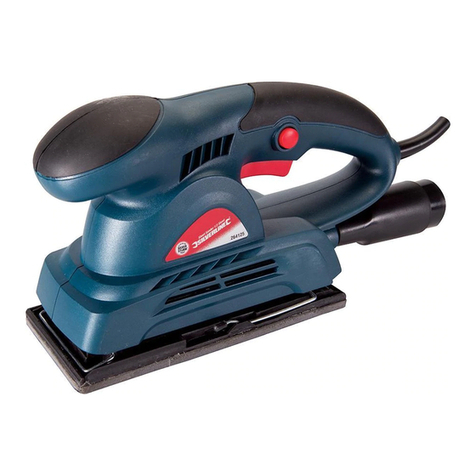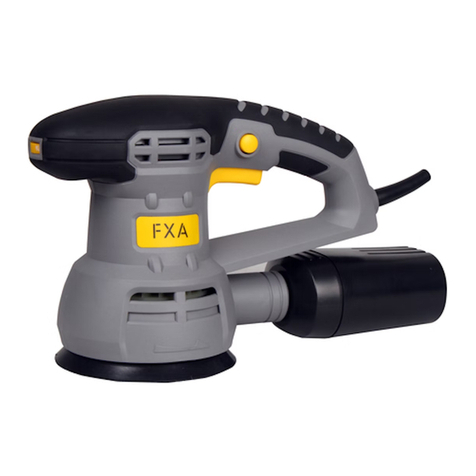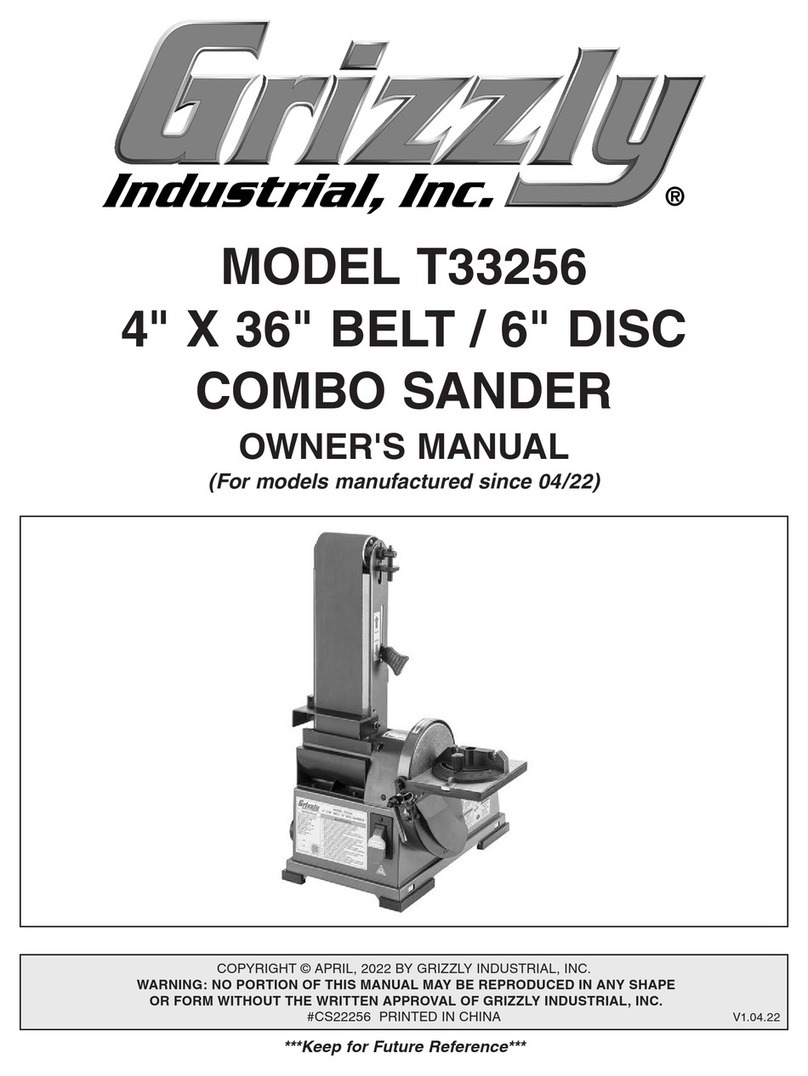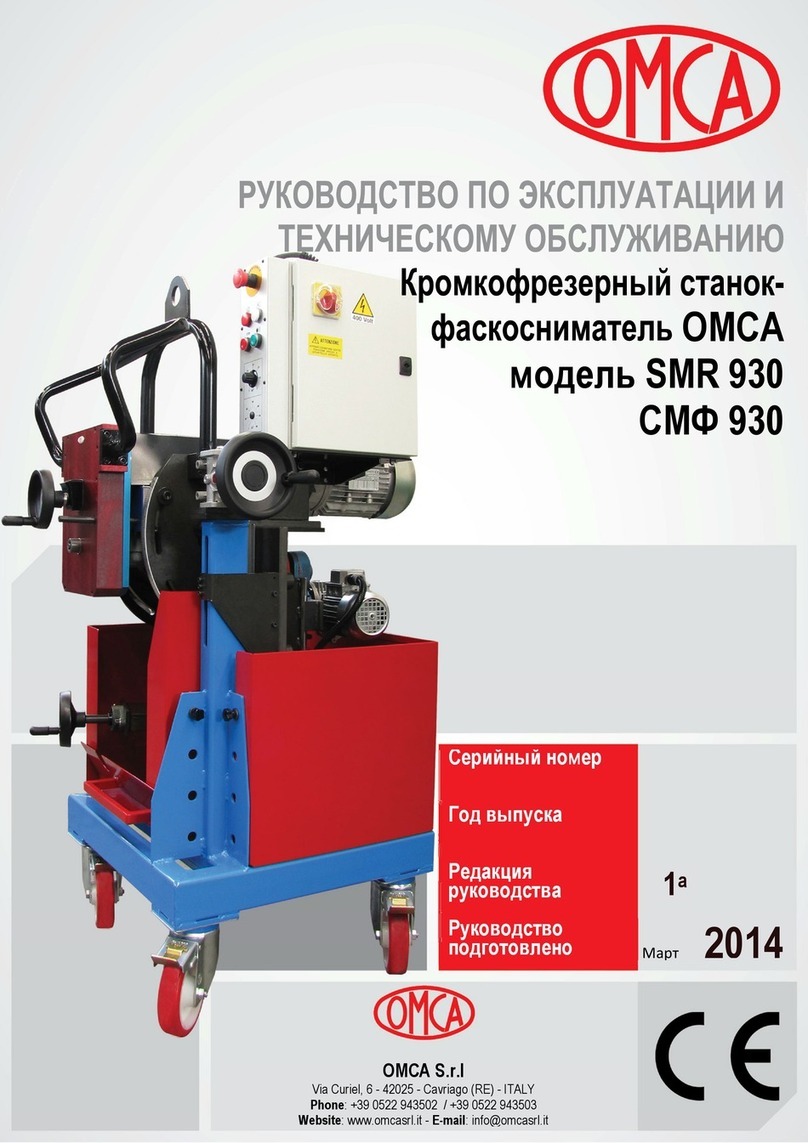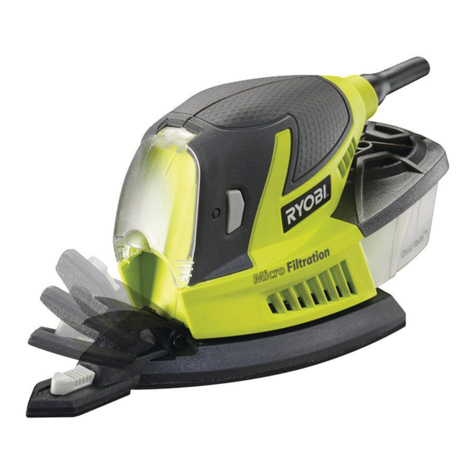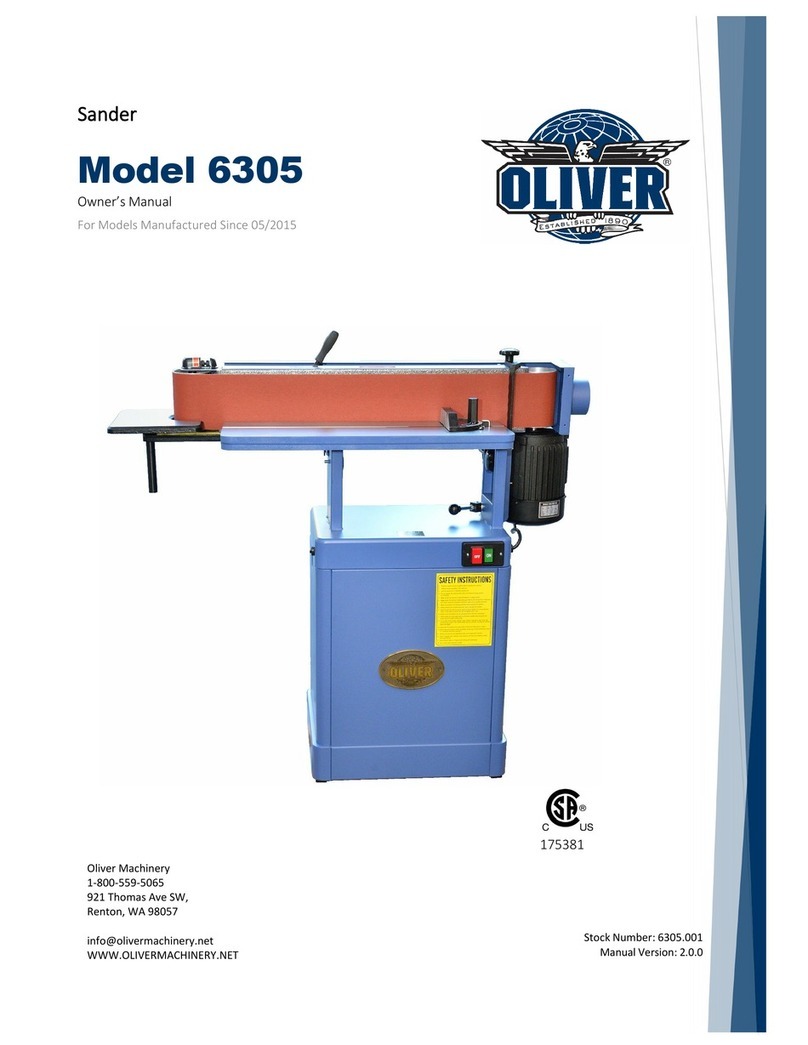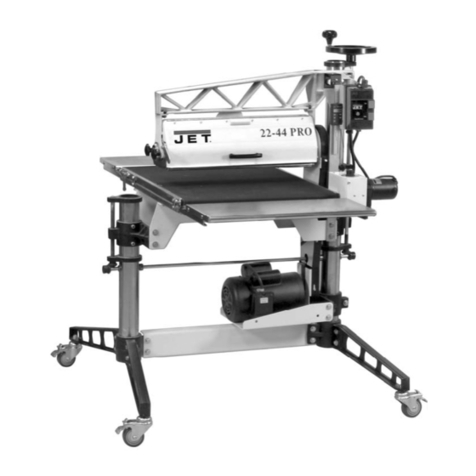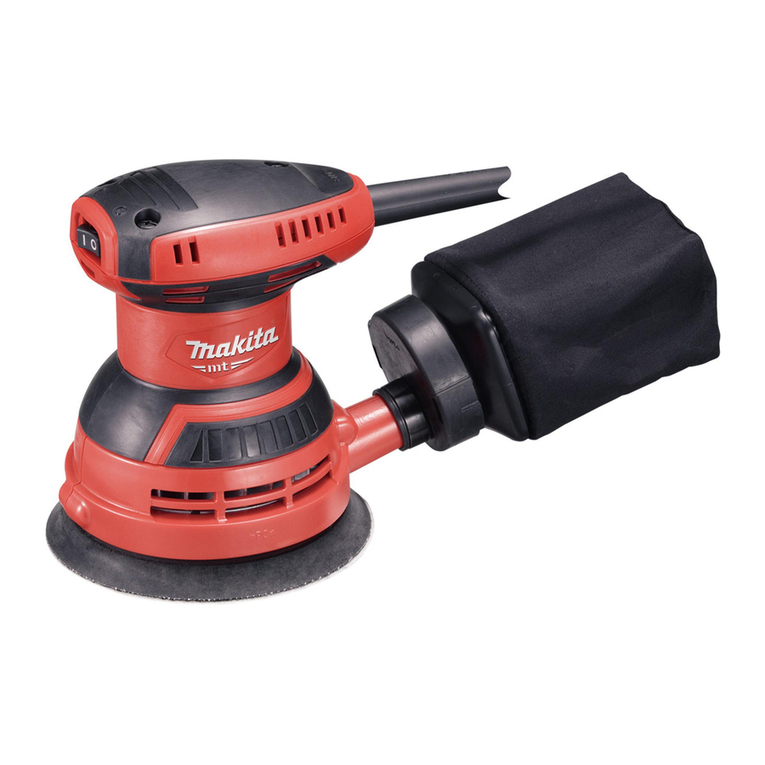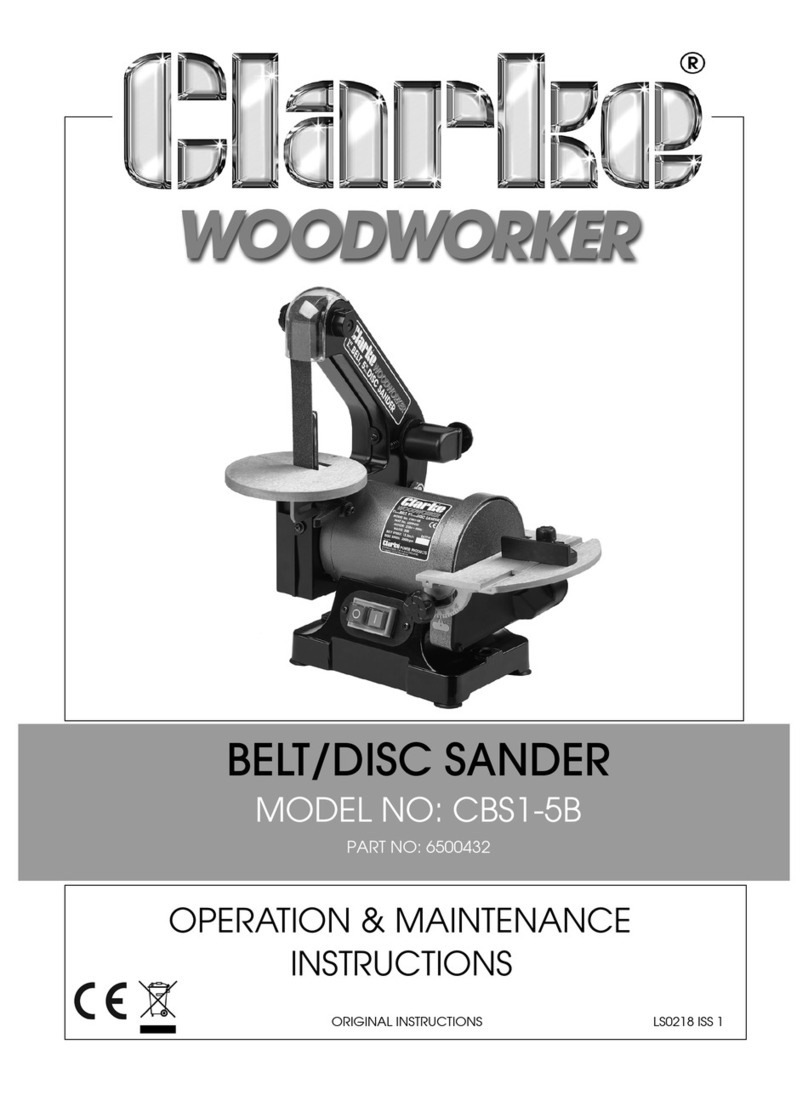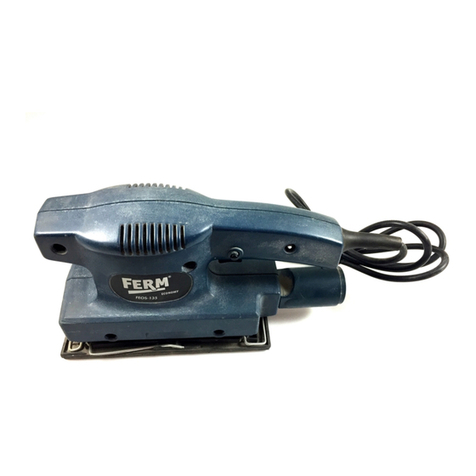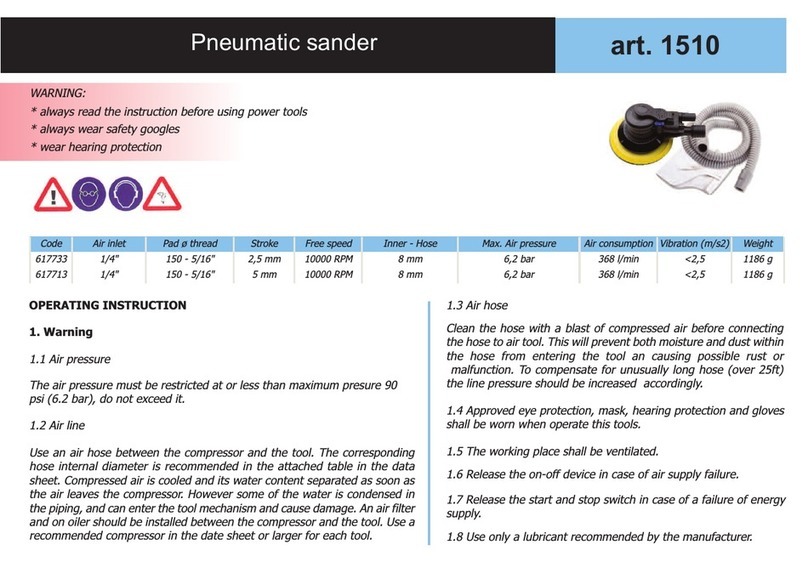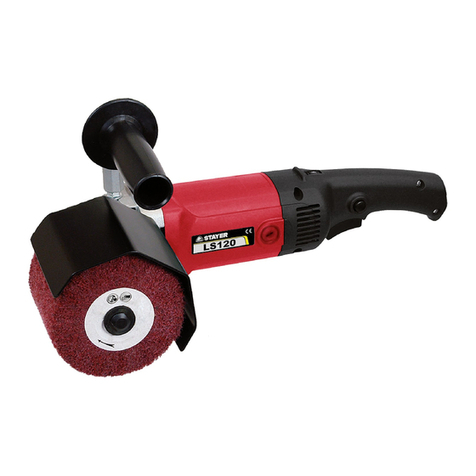
DIY 1200W Sander Polisher 180mm264569
5
c) Do not expose power tools to rain or wet conditions. Waterenteringapowertoolwill
increasetheriskofelectricshock.
d) Do not abuse the cord. Never use the cord for carrying, pulling or unplugging the power
tool. Keepcordawayfromheat,oil,sharpedgesormovingparts.Damagedorentangledcords
increasetheriskofelectricshock.
e) When operating a power tool outdoors, use an extension cord suitable for outdoor use.
Useofacordsuitableforoutdoorusereducestheriskofelectricshock.
f) If operating a power tool in a damp location is unavoidable, use a residual current device
(RCD) protected supply. UseofanRCDreducestheriskofelectricshock.
WARNING: WhenusedinAustraliaorNewZealand,itisrecommendedthatthistoolisALWAYS
suppliedviaResidualCurrentDevice(RCD)witharatedresidualcurrentof30mAorless.
Personal safety
a) Stay alert, watch what you are doing and use common sense when operating a power
tool. Do not use a power tool while you are tired or under the inuence of drugs, alcohol
or medication. Amomentofinattentionwhileoperatingpowertoolsmayresultinserious
personal injury.
b) Use personal protective equipment.Alwaysweareyeprotection.Protectiveequipmentsuchas
dustmask,non-skidsafetyshoes,hardhat,orhearingprotectionusedforappropriateconditions
willreducepersonalinjuries.
c) Prevent unintentional starting. Ensuretheswitchisintheoff-positionbeforeconnectingto
powersourceand/orbatterypack,pickinguporcarryingthetool.Carryingpowertoolswithyour
ngerontheswitchorenergisingpowertoolsthathavetheswitchoninvitesaccidents.
d) Remove any adjusting key or wrench before turning the power tool on. Awrenchorakey
leftattachedtoarotatingpartofthepowertoolmayresultinpersonalinjury.
e) Do not overreach. Keep proper footing and balance at all times.This enables better control of
thepowertoolinunexpectedsituations.
f) Dress properly. Donotwearlooseclothingorjewellery.Keepyourhair,clothingandgloves
awayfrommovingparts.Looseclothes,jewelleryorlonghaircanbecaughtinmovingparts.
g) If devices are provided for the connection of dust extraction and collection facilities,
ensure these are connected and properly used. Use of dust collection can reduce dust-related
hazards.
Power tool use and care
a) Do not force the power tool. Use the correct power tool for your application. The correct
powertoolwilldothejobbetterandsaferattherateforwhichitwasdesigned.
b) Do not use the power tool if the switch does not turn it on and off. Anypowertoolthat
cannotbecontrolledwiththeswitchisdangerousandmustberepaired.
c) Disconnect the plug from the power source and/or the battery pack from the power tool
before making any adjustments, changing accessories, or storing power tools. Such
preventivesafetymeasuresreducetheriskofstartingthepowertoolaccidentally.
d) Store idle power tools out of the reach of children and do not allow persons unfamiliar
with the power tool or these instructions to operate the power tool.
Power tools are dangerous in the hands of untrained users.
e) Maintain power tools. Check for misalignment or binding of moving parts, breakage of
parts and any other condition that may affect the power tool’s operation. If damaged, have
thepowertoolrepairedbeforeuse.Manyaccidentsarecausedbypoorlymaintainedpower
tools.
f) Keep cutting tools sharp and clean. Properlymaintainedcuttingtoolswithsharpcuttingedges
arelesslikelytobindandareeasiertocontrol.
g) Use the power tool, accessories and tool bits etc.in accordance with these instructions,
taking into account the working conditions and the work to be performed. Use of the
powertoolforoperationsdifferentfromthoseintendedcouldresultinahazardoussituation.
Service
a) Have your power tool serviced by a qualied repair person using only identical
replacement parts. Thiswillensurethatthesafetyofthepowertoolismaintained.
WARNING:Beforeconnectingatooltoapowersource(mainsswitchpowerpointreceptacle,outlet,
etc.)besurethatthevoltagesupplyisthesameasthatspeciedonthenameplateofthetool.A
powersourcewithavoltagegreaterthanthatspeciedforthetoolcanresultinseriousinjuryto
theuser,anddamagetothetool.Ifindoubt,donotpluginthetool.Usingapowersourcewitha
voltage less than the nameplate rating is harmful to the motor.
Sanding Tool Safety
WARNING:Holdthepowertoolbyinsulatedhandlesorgrippingsurfacesonly,becausethe
sandingbelt/sheetmaycontactitsowncord.Cuttinga"live"wiremaymakeexposedmetalpartsof
thepowertool‘live’andcouldgivetheoperatoranelectricshock.
WARNING:Useclampsoranotherpracticalwaytosecuretheworkpiecetoastableplatform.
Holdingtheworkpiecebyhandoragainstthebodymakesitunstableandmayleadtolossof
control.
a. ALWAYS wear appropriate protective equipment, including a dust mask with a minimum
FFP2 rating, eye protection and ear defenders
b. Ensure all people in the vicinity of the work area are also equipped with suitable personal
protective equipment
c. Take special care when sanding some woods (such as beech, oak, mahogany and teak), as
the dust produced is toxic and can cause extreme reactions
d. NEVER use to process any materials containing asbestos. Consultaqualiedprofessional,if
youareuncertainwhetheranobjectcontainsasbestos
e. DO NOT sand magnesium or alloys containing a high percentage of magnesium
f. Be aware of paint nishes or treatments that may have been applied to the material that
is being sanded. Manytreatmentscancreatedustthatistoxic,orotherwiseharmful.Ifworking
on a building constructed prior to 1960, there is an increased chance of encountering lead-based
paints
g. The dust produced when sanding lead-based paints is particularly hazardous to children,
pregnant women, and people with high blood pressure. DONOTallowthesepeoplenearto
theworkarea,evenifwearingappropriatepersonalprotectiveequipment
h. Whenever possible, use a vacuum dust extraction system to control dust and waste
i. Be especially careful when using a machine for both wood and metal sanding. Sparksfrom
metalcaneasilyignitewooddust.ALWAYScleanyourmachinethoroughlytoreducetheriskof
re
j. Empty the dust bag or container frequently during use, before taking breaks and after
completion of sanding. Dustmaybeanexplosionhazard.DONOTthrowsandingdustinto
anopenre.Spontaneouscombustionmayoccurwhenoilorwaterparticlescomeintocontact
withdustparticles.Disposeofwastematerialscarefullyandinaccordancewithlocallawsand
regulations.
k. Work surfaces and sandpaper can become very hot during use. If there is evidence of
burning(smokeorash),fromtheworksurface,stopandallowthematerialtocool.DONOTtouch
worksurfaceorsandpaperuntiltheyhavehadtimetocool
l. DO NOT touch the moving sandpaper
m. ALWAYS switch off before you put the sander down
n. DO NOT use for wet sanding. Liquids entering the motor housing can cause severe electric
shocks
o. ALWAYS unplug the sander from the mains power supply before changing or replacing
sandpaper
p. Even when this tool is used as prescribed it is not possible to eliminate all residual risk
factors. If you are in any doubt as to safe use of this tool,do not use it
Polisher Safety
• Do not use this polisher as an angle grinder
• Alwaysreadandunderstandallinformationsuppliedwithpolishingpastesbeforeuse
• Donotsmoke,eatordrinkwhenusingthispolisher
• Neverattachanyaccessorywithamaximumspeedlowerthanthenoloadspeedofthemachine
1Spindle
2Spindle Lock Button
3Front Handle
4Speed Control Dial
5Lock-On Button
6Rear Handle
7On/Off Trigger Switch
8Hook & Loop Backing Pad
9Hook & Loop Polishing Bonnet
10 Hook & Loop Sanding Disc
11 Brush Access Plugs
Product Familiarisation
264569_MANUAL.indd 5 10/07/2017 12:13
